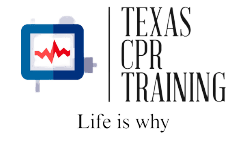Emphasis on Chest Compressions* 2015 (Updated):
Untrained lay rescuers should provide compression-only (Hands-Only) CPR, with or without dispatcher guidance, for adult victims of cardiac arrest. The rescuer should continue compression-only CPR until the arrival of an AED or rescuers with additional training. All lay rescuers should, at a minimum, provide chest compressions for victims of cardiac arrest. In addition, if the trained lay rescuer is able to perform rescue breaths, he or she should add rescue breaths in a ratio of 30 compressions to 2 breaths. The rescuer should continue CPR until an AED arrives and is ready for use, EMS providers take over care of the victim, or the victim starts to move.
Chest Compressions* 2015 (Updated): In adult victims of cardiac arrest, it is reasonable for rescuers to perform chest compressions at a rate of 100 to 120/min
Learn more at Texas CPR Training www.texascpr.com
Top Things to Know: 2015 AHA Guidelines Update For CPR and ECC Science
Home 💙 CPR/First Aid/AED in person 💙 CPR/First Aid/AED virtually 💙 BLS Healthcare Provider CPR 💙 Become an American Heart Instructor 💙 About 💙 Gallery 💙 Blog 💙 Contact Us
